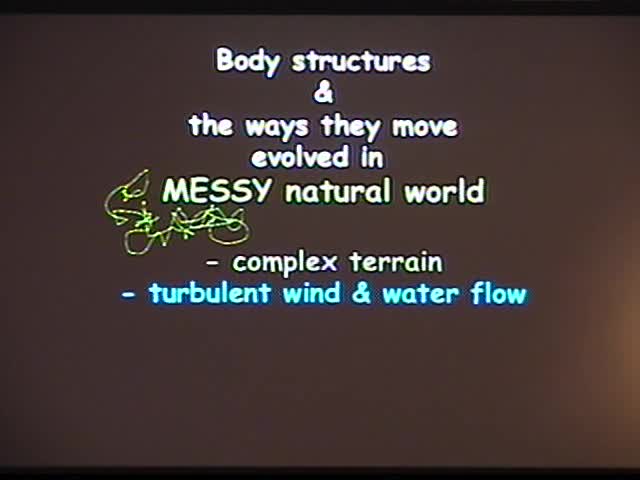Effects of ambient water flow on locomotion
Presenter
June 3, 2010
Keywords:
- Turbulence
MSC:
- 76Fxx
Abstract
Keyword: waves, turbulence, walking, swimming, larvae, crabs
Abstract: Turbulent ambient currents and waves in marine habitats impose forces on organisms. The locomotory performance of organisms swimming in the water column and moving across the substratum is affected by environmental fluid dynamic forces. Therefore, the functional significance of morphological features and kinematics of locomoting organisms can best be understood if studied under the range of flow conditions they experience in their natural habitats. Three examples will be discussed: 1) Many bottom-dwelling marine animals produce microscopic larvae that are dispersed to new sites by ambient water currents. How do these weakly-swimming larvae carried in wavy, turbulent water flow manage to land on the sea floor in suitable habitats? 2) Horseshoe "crabs", Limulus polyphemus, gather in the surf zone to mate. How can they crawl in the waves without being pushed in the wrong direction or overturned by the back-and-forth flow of the waves? 3) Shore crabs, Grapsus tenuicrustatus, also live on wave-swept shores, where they spend part of their time in air and part underwater. How do they run in air (where gravity predominates) versus underwater (where hydrodynamic forces are important), and what happens when a wave hits?
